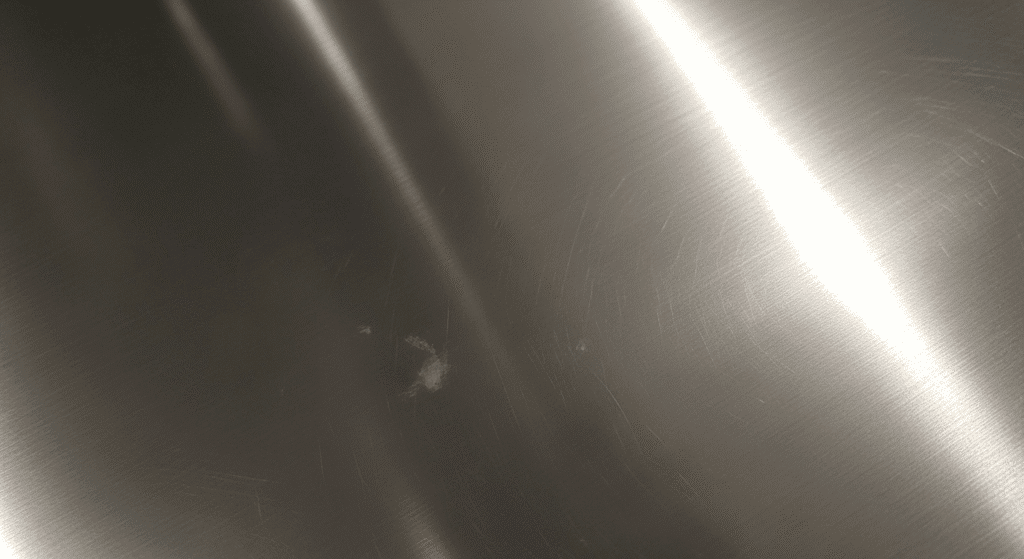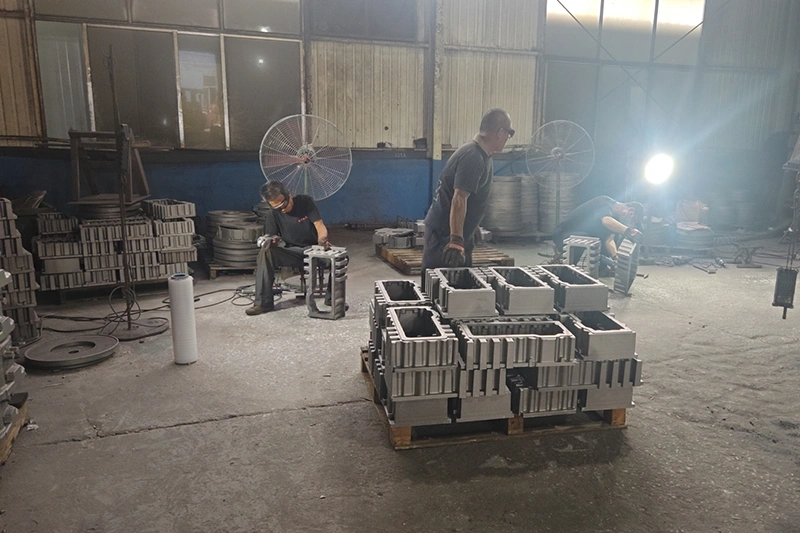Stainless steel contains at least 10.5% chromium, which forms a protective oxide layer that prevents rust and corrosion. This versatile material comes in five main families—austenitic, ferritic, martensitic, duplex, and precipitation-hardening—each with unique properties that make them suitable for different applications.

Austenitic stainless steels make up 70% of stainless steel production and contain 16-25% chromium and 8-20% nickel. They have a face-centered cubic crystal structure that remains non-magnetic in the annealed condition.
These steels can’t be hardened by heat treatment—only through cold working, which can roughly double their strength. In the annealed state, grade 304 has a tensile strength of 515-750 MPa and yield strength around 215 MPa, with excellent elongation over 40%.
Austenitic grades offer the best general corrosion resistance among stainless families. They resist atmospheric corrosion, freshwater, and many chemicals effectively. However, they’re vulnerable to chloride-induced pitting and stress-corrosion cracking in hot chloride solutions.
You’ll find austenitic stainless in food processing equipment, kitchen sinks, chemical plant piping, and medical devices. Their combination of corrosion resistance, formability, and performance at both cryogenic and elevated temperatures makes them incredibly versatile.
Ferritic stainless steels are plain chromium steels containing 10.5-18% chromium with very low carbon (typically under 0.12%) and little to no nickel. They maintain a body-centered cubic crystal structure and remain magnetic at room temperature.
These steels cannot be hardened by heat treatment. Grade 430, for example, has moderate strength with tensile strength around 450 MPa and yield strength of 205 MPa in the annealed condition. They have limited ductility (20-30% elongation) compared to austenitic grades.
Ferritic grades provide moderate corrosion resistance—better than carbon steel but generally below austenitic grades. They excel at resisting chloride stress-corrosion cracking due to their ferritic structure. High-chromium ferritics can withstand temperatures up to 815°C without excessive scaling.
Common applications include automotive exhaust systems, kitchen appliance interiors, and architectural trim. Their low cost (no expensive nickel) makes them popular for consumer products needing moderate corrosion resistance.
Martensitic stainless steels contain 11-18% chromium with higher carbon content (0.1-1.2%) that enables hardening through heat treatment. They typically have minimal nickel content (0-2%) and are ferromagnetic.
The key advantage is their ability to be hardened by quenching and tempering. Grade 410 can reach hardness of HRC 40-45 and tensile strength over 1000 MPa after proper heat treatment. This comes with reduced ductility—elongation may drop to 10% or less in the hardened condition.
Martensitic grades have the lowest corrosion resistance among stainless families. The higher carbon content ties up some chromium as carbides, reducing free chromium available for corrosion protection. They perform adequately in mild environments but can rust in aggressive conditions.
These steels dominate applications requiring high hardness with some corrosion resistance: knife blades, surgical instruments, valve parts, pump shafts, and bearings. Grade 410 serves general-purpose needs, while 420 and 440C provide even higher hardness for cutting tools.
Duplex stainless steels have a mixed microstructure—approximately 50% austenite and 50% ferrite. They contain 18-28% chromium, 4-8% nickel, 2.5-4% molybdenum, and 0.1-0.3% nitrogen. Grade 2205, the most common duplex, contains about 22% chromium, 5% nickel, and 3% molybdenum.
These steels exhibit roughly double the yield strength of austenitic grades. Grade 2205 has a yield strength of 450-550 MPa compared to 240 MPa for 304, while maintaining 25% elongation. They’re magnetic due to the ferrite phase.
Duplex grades provide excellent corrosion resistance, often superior to 316 stainless. Their high chromium, molybdenum, and nitrogen content gives them a pitting resistance number (PREN) above 35, much higher than 316’s PREN of 26. They’re highly resistant to chloride stress-corrosion cracking.
You’ll find duplex steels in offshore oil platforms, chemical process plants, desalination facilities, and marine equipment. Their high strength allows thinner wall sections in pressure vessels and tanks, providing weight and cost savings.
PH stainless steels achieve high strength through age-hardening heat treatment. They typically contain 15-17.5% chromium, 4-8% nickel, plus additions of copper, niobium, aluminum, or titanium that form strengthening precipitates. Grade 17-4PH contains about 17% chromium, 4% nickel, and 4% copper.
After aging treatment, these steels achieve tensile strengths of 1000-1500 MPa. Grade 17-4PH aged at 480°C reaches tensile strength around 1400 MPa with hardness of HRC 40-44. Even in the solution-treated condition, they have respectable strength around 1050 MPa.
PH grades offer corrosion resistance comparable to 304 stainless in many environments. They resist atmospheric corrosion, freshwater, and mild chemicals well, outperforming standard martensitic grades like 410.
Common applications include aerospace components, gas turbine parts, high-strength fasteners, pump shafts, and medical instruments. The ability to machine components in a soft state then age-harden to full strength makes them particularly valuable for complex parts.
| Grade | Type | Cr (wt%) | Ni (wt%) | Mo (wt%) | C (wt%) | Other Key Elements |
|---|---|---|---|---|---|---|
| 304 (S30400) | Austenitic | 18-20 | 8.0-10.5 | – | ≤0.08 | Balance Fe |
| 316 (S31600) | Austenitic | 16-18 | 10-14 | 2.0-3.0 | ≤0.08 | Mo for pitting resistance |
| 430 (S43000) | Ferritic | 16-18 | ≤0.75 | – | ≤0.12 | Low cost straight Cr steel |
| 410 (S41000) | Martensitic | 11.5-13.5 | ≤0.75 | – | 0.08-0.15 | High C enables hardening |
| 904L (N08904) | High-Alloy Austenitic | 19-23 | 23-28 | 4.0-5.0 | ≤0.02 | Cu 1-2%; N ≤0.1% |
| 2205 (S32205) | Duplex | ~22 | ~5 | ~3 | ≤0.03 | N ~0.14% for phase balance |
| 17-4PH (S17400) | Precipitation Hardening | 15.0-17.5 | 3.0-5.0 | – | ≤0.07 | Cu 3-5%; Nb 0.15-0.45% |
Grade 304, also known as 18/8 stainless, is the most versatile and widely used stainless steel. It contains 18-20% chromium and 8-10.5% nickel with carbon limited to 0.08%.
In the annealed condition, 304 has tensile strength of 515-750 MPa and yield strength around 215 MPa with excellent elongation over 40%. It can only be strengthened through cold working, which can push tensile strength to 800-1100 MPa.
304 resists atmospheric corrosion, freshwater, and many organic chemicals excellently. However, it’s prone to pitting in chloride environments like seawater. The low-carbon 304L variant prevents sensitization during welding.
Grade 316, the “marine grade” stainless, adds 2-3% molybdenum to a composition similar to 304. This molybdenum addition significantly improves pitting and crevice corrosion resistance.
Mechanical properties match 304 closely, with tensile strength of 515-720 MPa and yield strength of 200-240 MPa in the annealed condition. The 316L variant with carbon under 0.03% prevents sensitization.
The molybdenum makes 316 far superior to 304 in chloride environments. It withstands marine atmospheres, seawater splash zones, and chemical environments with chlorides that would cause 304 to pit or crack.
Grade 430 contains 16-18% chromium with essentially no nickel, making it one of the most economical stainless grades. Carbon is limited to 0.12%.
Annealed 430 has tensile strength around 450 MPa and yield strength of 205 MPa with about 22% elongation. It’s magnetic and cannot be hardened by heat treatment.
430 performs well in mild environments and can tolerate temperatures up to 815°C continuously. However, it has lower corrosion resistance than 304—it will show rust in salt spray or coastal exposure.
Grade 410 contains 11.5-13.5% chromium and 0.1-0.15% carbon, providing just enough of each for mild corrosion resistance and hardenability.
When hardened and tempered, 410 reaches HRC 40-45 hardness with tensile strength exceeding 1000 MPa. In the annealed state, it’s relatively soft with tensile strength of 480-700 MPa.
410 offers good resistance to mild corrosion environments, especially when hardened and polished. It performs adequately in steam and dilute acids but will rust in chloride-rich conditions.
Grade 904L is a super austenitic steel containing 19-23% chromium, 23-28% nickel, 4-5% molybdenum, and 1.5% copper. Carbon is kept extremely low at 0.020% maximum.
In the solution-annealed condition, 904L has tensile strength around 490 MPa and yield strength of 220 MPa with elongation over 35%. Like other austenitics, it cannot be hardened by heat treatment.
904L provides outstanding corrosion resistance, particularly in sulfuric and phosphoric acids. It can handle boiling sulfuric acid up to 40-50% concentration and resists chloride-induced corrosion better than 316.
Grade 2205 contains approximately 22% chromium, 5% nickel, 3% molybdenum, and 0.14-0.20% nitrogen, creating a balanced austenite-ferrite structure.
This duplex structure provides yield strength of 450-550 MPa—double that of 316L—while maintaining 25% elongation. Tensile strength reaches 700-800 MPa in the annealed condition.
2205’s PREN of 35-40 indicates excellent pitting resistance, far exceeding 316L’s PREN of 26. It’s practically immune to chloride stress-corrosion cracking up to 150°C.
17-4PH contains 15-17.5% chromium, 3-5% nickel, 3-5% copper, and 0.15-0.45% niobium. The name derives from its nominal 17% chromium and 4% nickel content.
After aging at 482°C (H900 condition), 17-4PH achieves tensile strength of 1310-1400 MPa with yield strength of 1100-1300 MPa and hardness around HRC 44. Properties can be tailored by varying the aging temperature.
17-4PH offers corrosion resistance comparable to 304 in most environments. It resists atmospheric corrosion, freshwater, and mild acids well, significantly outperforming martensitic grades like 410.
Type 303 is essentially 304 with 0.15-0.35% sulfur added for improved machinability. The sulfur forms manganese sulfide inclusions that lubricate cutting tools during machining.
This free-machining grade sacrifices some corrosion resistance and ductility for superior machinability compared to standard 304. It’s not recommended for marine or highly acidic environments.
Types 321 and 347 are stabilized austenitic grades similar to 304 but with titanium (321) or niobium (347) additions. These elements prevent chromium carbide formation during welding or high-temperature exposure.
The stabilization allows these grades to maintain corrosion resistance after prolonged exposure to 450-800°C, where standard 304 would sensitize and become susceptible to intergranular corrosion.
Types 201 and 202 are low-nickel austenitic steels where manganese (5.5-7.5%) and nitrogen partially replace expensive nickel. They contain 16-18% chromium and only 3.5-5.5% nickel.
These grades offer mechanical properties similar to 304 at lower cost but with slightly reduced corrosion resistance and increased work-hardening tendency.
Type 409 contains just 10.5-11.75% chromium with titanium stabilization, making it one of the least expensive stainless steels available.
While it has the lowest corrosion resistance among stainless grades and will form surface rust in aggressive environments, it withstands high temperatures well and resists through-corrosion.
Type 420 is a higher-carbon martensitic grade with 12-14% chromium and 0.3% carbon. When properly hardened, it reaches HRC 50 hardness.
This “cutlery grade” stainless provides adequate corrosion resistance for water and mild environments when well-polished and hardened.
Type 440C is the hardest standard stainless steel, containing 0.95-1.2% carbon and 16-18% chromium. It can be heat treated to HRC 58-62 hardness.
While it has decent corrosion resistance in mild conditions, the high carbon content ties up chromium, reducing corrosion resistance compared to lower-carbon stainless grades.
Type 2507 super duplex contains 25% chromium, 7% nickel, 4% molybdenum, and 0.25% nitrogen. It offers even greater corrosion resistance than 2205 with PREN over 40.
Yield strength reaches 800-900 MPa, providing exceptional strength along with superior resistance to warm seawater and high-chloride environments.
15-5 PH contains 15% chromium and 5% nickel with copper and niobium additions. It was developed to maintain better toughness than 17-4PH, especially in thick sections.
Mechanical properties match 17-4PH with tensile strength up to 1400 MPa when aged, but 15-5 PH maintains superior fracture toughness at equivalent strength levels.

